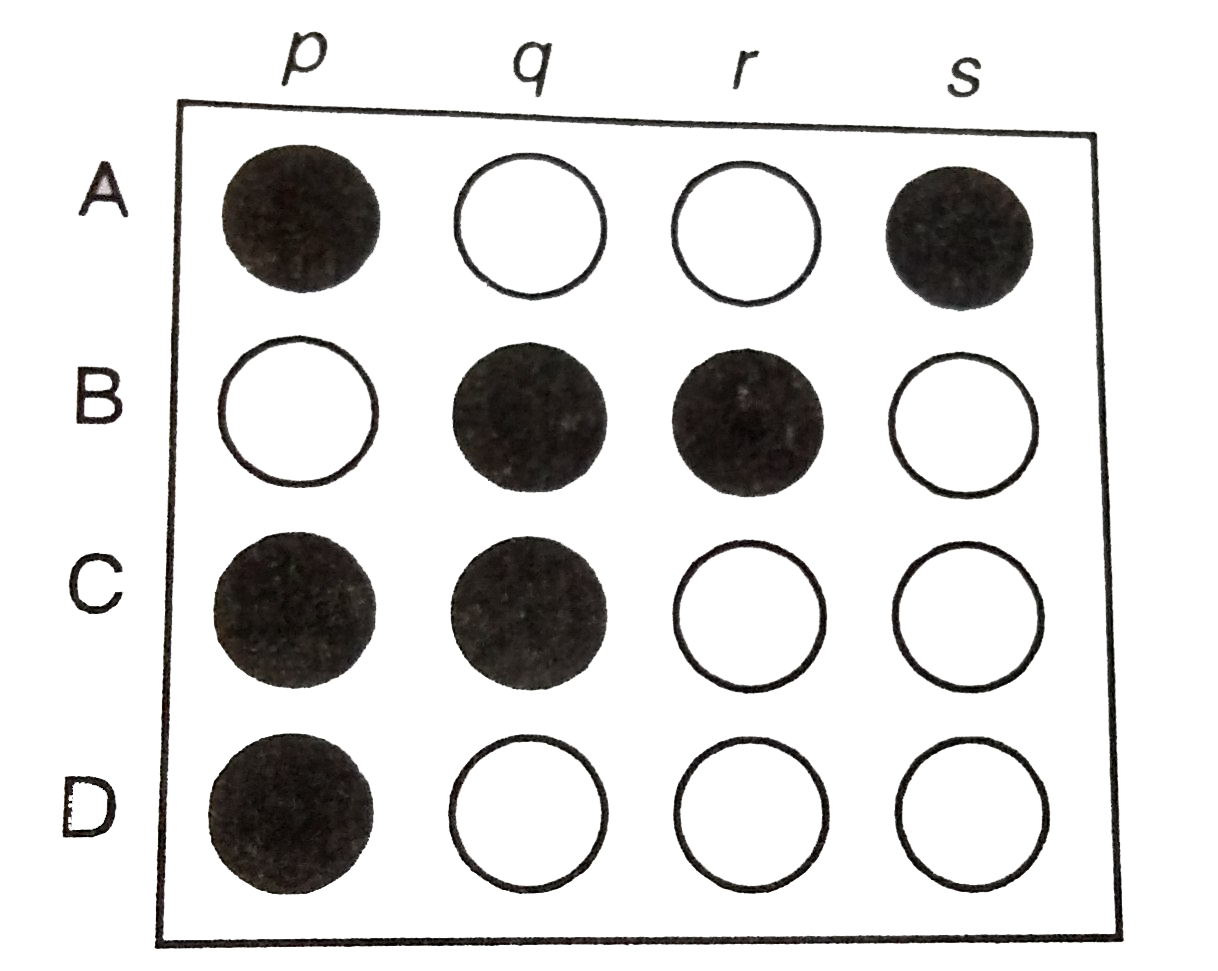Solution in Telugu
The correct Answer is:A-Q; B-R; C-S; D-P
Step by step video, text & image solution for {:("Column-I","Column-II"),("A) Thermal expansion","P) Pendulum clock"),("B)" alpha","beta","gamma ,"Q) Depends, on dimensions Material, Temperature"),("C) Bimetallic strip","R) Depends on nature of the material only"),("D) Invar stell","S) Balance wheel of a watch"):} by Physics experts to help you in doubts & scoring excellent marks in Class 11 exams.
Topper's Solved these Questions
- BOOK - AAKASH SERIESCHAPTER - THERMAL PROPERTIES OF MATTEREXERCISE - EXPANSION OF SOLIDS (PRACTICE SHEET) LEVEL-II (Integer Type Questions)5videos
THERMAL PROPERTIES OF MATTER
- BOOK - AAKASH SERIESCHAPTER - THERMAL PROPERTIES OF MATTEREXERCISE - EXPANSION OF LIQUIDS (LECTURE SHEET) Straight Objective Type Questions15videos
THERMAL PROPERTIES OF MATTER
- BOOK - AAKASH SERIESCHAPTER - THERMAL PROPERTIES OF MATTEREXERCISE - EXPANSION OF SOLIDS (PRACTICE SHEET) LEVEL-II (Linked Comprehension Type Questions)7videos
THERMAL PROPERTIES OF MATTER
- BOOK - AAKASH SERIESCHAPTER - SYSTEM OF PARTICLES AND ROTATIONAL MOTIONEXERCISE - PRACTICE EXERCISE99videos
SYSTEM OF PARTICLES AND ROTATIONAL MOTION
- BOOK - AAKASH SERIESCHAPTER - THERMODYNAMICSEXERCISE - EXERCISE - 333videos
THERMODYNAMICS
Similar Questions
When a brass rod is put in a furnace, its length increases by 1 %. If the room temperature is 25°C and αBrass=20×10−6/∘C, the change in. the temperature is 100x∘C, where x=
01:33View SolutionCo-efficient of apparent expansions of a liquid in Gold vessel is G and when heated in a silver vessel is S. If coefficient of linear expansion of Gold is A, coefficient of linear expansion of Silver is
View SolutionPassage - I:
A rod of metal X of length 50.0 cm elongates by 0. 10 cm when it is heated from 0°C to 100°C. Another rod of metal Y of length 80.0 cm elongates by 0.08cm for the same rise in temperature. A third rod of length 50 cm, made by welding pieces of rods X and Y placed end to end, elongates by 0.03 cm when its temperature is raised from 0°C to 50°C.
The coefficients of linear expansion of metal X and of metal Y are in the ratio of01:25View SolutionThe centre of mass of two particles with masses 2kg and 6 kg located at (1,1,1), (2,2,1) respectively has the coordinates
05:55View SolutionA bullet of mass 10×10−3 moving with a speed of 20ms−1 hits an ice block (0∘C) of 990g kept at rest on a frictionless floor and gets embedded in it. If ice takes 50% of K.E, the amount of ice melted (in grams) approximately is (J=4.2J/cal) (latent heat of ice=80cal/g)
04:35View SolutionMatch the column {:("Column I","Column II"),((A)." Sucrose",(P)." "alpha-D" Glucose"),((B)." Maltose",(Q)." "beta-"Fructose"),((C)." Lactose",(R)." "beta-D-"Glucose"),(,(S)." "beta-D-"Galactose"):}
View SolutionColumn IColumn II(A) Chemisorption p Exothermic(B) Physical adsorptionq Endothermic(C) Desorptionr Removal of adsorbed material (D) Activation of adsorbents Specifi in nature
 View Solution
View SolutionMatch the Column-I with Column-II : {:(,"Column-I",,"Column-II"),("(a)","Mole fraction","(p)","mol kg"^(-1)),("(b)","Molality","(q)","Depends on temperature"),("(c)","Molarity","(r)","Unitless"),("(d)","Normality","(s)","Independent of temperature"):}
01:24View SolutionWith regard to dependence of quantities given in column I and II, match the following.
Column IColumn II(A)Young's modulus of a substance (p)Depends on temperature(B)Bulk modulus of a substance(q)Depends on length(C)Modulus of rigidity of a substance(r)Depends on area of cross-section(D)Volume of a substance(s)Depends on the nature of material05:47View Solution∣∣ ∣ ∣ ∣ ∣ ∣∣Column IColumn II(A)Epimers(p)α−(D)glucose(B)Anomers(q)D-mannose(C)Reducing ketone(r)Fructose(D)Functional isomer of glucose(s)β−(D)glucose∣∣ ∣ ∣ ∣ ∣ ∣∣
 01:25View Solution
01:25View SolutionMatch the Column-I with Column-II:
(Column-I,Column-II),((a)n→p++......,(p)Positron emission),((b)p+→n+.....,(q)β−emission),((c)X-ray emission,(r)K-electron capture),((d)4[._(1)^(1)H] to ....+ 2 beta^(+) + "Energy",(s) alpha - "emission"):}View Solution{:(" Column I ( Crystal system)", "( Column II (Axial ratio)"),("(A) Tetragonal", "(p)" a ne b ne c"," alpha = beta = gamma = 90^(@)),("(B) Rhombic" , "(q)" a = b ne c"," alpha = beta = gamma = 90^(@)),("(C)Monoclinic" , "(r)" a ne b ne c"," alpha ne beta ne gamma ne 90^(@)),("(D) Triclinic" , "(s)" a ne b ne c"," alpha = gamma = 90^(@) ne beta):}
04:35View SolutionColumn I (Gas) Column II(Ratio γ=Cp/Cv)(A)Ammonia(p)1.20(B)Carbon dioxide(q)1.30(C)Carbon monoxide (r)1.40(D)Helium (s)1.66
(a) A−s,B−r,C−q,D−p (b) A−p,B−q,C−r,D−s (c ) A−s,B−q,C−r,D−p (d) A−r,B−s,C−q,D−p02:33View SolutionMatch Column - I with Column - II

PQRS(A)1243(B)2143(C)4132(D)4321View SolutionMatch the Column-I with Column-II :
Column-IColumn-II(a)Mole fraction(p)mol kg−1(b)Molality(q)Depends on temperature(c)Molarity(r)Unitless(d)Normality(s)Independent of temperatureView Solution

